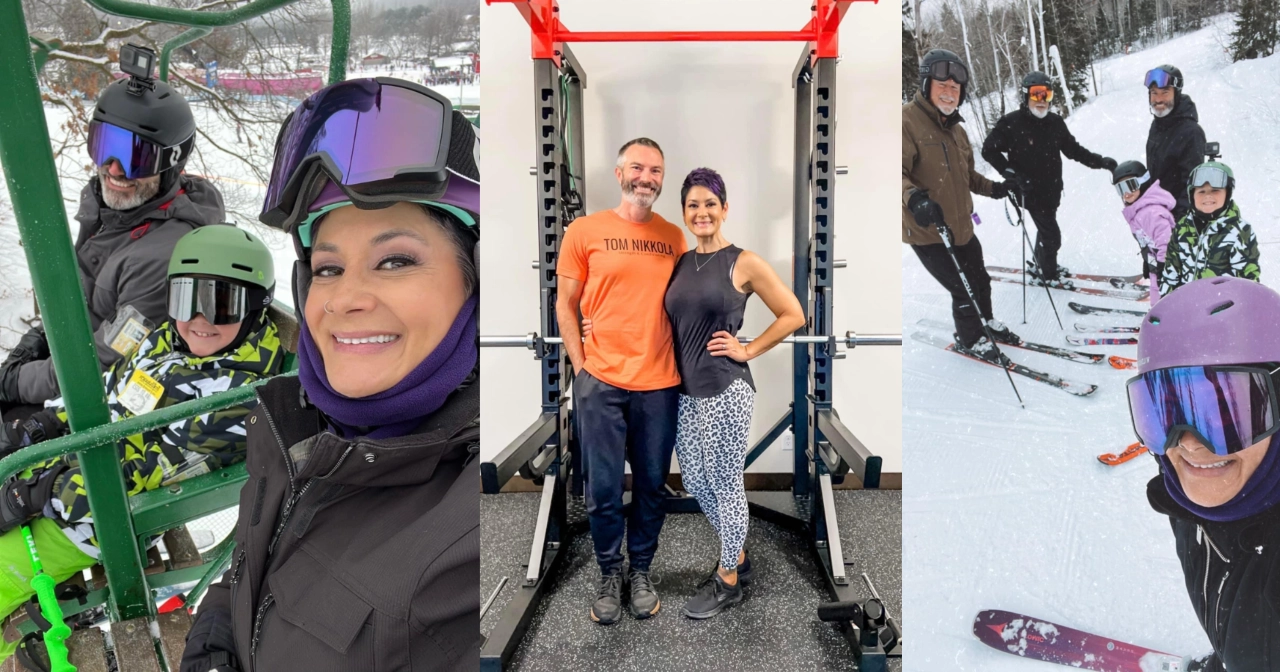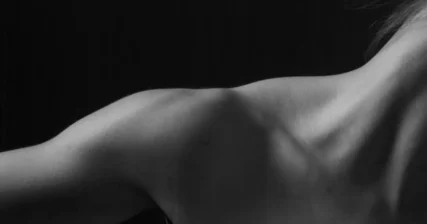Listen on: Apple Podcasts | Spotify
It’s been six months since I fell off my bike, landed on top of my head, and broke my neck and damaged my spinal cord. From the morning after, when I got out of my hospital bed and stood up, we started talking about recovering in six months.
When I say “we,” I mean Vanessa and I. Not my doctors and us. They kept saying it would be a year before I’d be able to do the same activities I did before the accident. When I said I’d get at least one mountain bike ride in before the snow fell, and would be skiing by December, the look I was met with said, “that’s ridiculous.”
As of January 30, it’s now been six months. Is life exactly as it was before? No. Am I doing everything I was before? Yes.
How’s your recovery going?
I’m often asked this question, and every time, I pause and deliberate in my head about how to respond.
On the one hand, recovery is spectacular, as I’m able to do all the things I once did. That’s hundreds of times better than what things looked like when I first wrecked my neck. To say anything short of wonderful might suggest I’m not incredibly grateful to be where I’m at today. It’s not an exaggeration to say that I could have died or at least become a quadriplegic. In fact, one of the doctors early on said I technically was a walking quadriplegic, as I experienced paralysis in all four limbs, with my upper body being more severe than the lower body. So, compared to where I was and where I could still be, my recovery has been spectacular.
On the other hand, I’m not fully recovered, though no one would know if they watched me move around and do everyday tasks. Nor would anyone know if they saw me on the slopes, mountain bike trails, or in the gym unless they saw me doing bench presses or dips.
That said, someone might read this with interest in what’s possible after sustaining an injury as I did. So, setting aside my gratitude for being alive and able to do almost everything I did in the past, here’s a more objective assessment of my recovery after six months.
We did get a few mountain bike rides in before the snow fell and got our first day of skiing in on November 16, which was 3 1/2 months after the injury. It was a pretty special day of skiing.
As of today, we’ve skied 21 times this winter. Last weekend, I was working on my carving, seeing how sharp I could cut my turns and lost my edges. I crashed hard, head first, right under the chairlift. I paused for a moment before getting up, just to make sure my head was still attached correctly. It was, and still is. I knew I’d eventually crash and was happy to find out I could crash and come out of it unscathed.
We’ve had the 4th snowiest winter on record this year (it must be climate change…eyes roll), so I’ve done a ton of shoveling and snow blowing. Like mowing the lawn in the summer, it’s a great way to get in some conditioning work to complement my strength training.
As functional as I feel, and as active as I’ve been, there are still some ways I haven’t fully recovered. It’s possible I never will. None of this is life-altering, but it’s worth mentioning so that anyone else who sustains a similar injury has a frame of reference during their recovery process.
The following are the main ways I’m not yet back to 100%:
- Sensory nerve dysfunction: As it has all along, cold water, or even a cold breeze across my skin still feels painful instead of cold. The only way I can explain it is that it’s like pressing on an area you bruised by walking into the corner of a table. When getting into a cold shower or swimming pool, you’d sense that it’s cold. I sense that it hurts, which means it’s cold. If it’s hot, it feels hot. Also, my pointer and middle fingers often hurt on my left hand, especially when they are cold, and if I brush the sides of my middle finger, it causes a burning sensation. On more rare occasions, I get the same experience on my right hand, but much more often it’s just my left.
- Upper body weakness: I bench pressed 155 pounds for sets of six reps last week. That’s about 90 pounds less than I could do before I crashed. Most of the weakness comes from my pecs, triceps, and serratus anterior. The weakness is most obvious in exercises like bench presses and dips. Most times when I’m done with a set of bench presses, I end up laughing. I literally exert the same kind of effort to lift 155 pounds for six reps today as I did to complete six reps with 250 pounds before I crashed. It’s obvious that I don’t have the same level of nerve connection to those muscles I once did. At least not yet. I’ll keep at it, though.
- Handwriting: Vanessa says I always had poor handwriting, so she doesn’t think it’s worse than it was. What’s different, though, is that I have to move my whole arm to write the letters rather than just moving my hand.
- Increased need for sleep: This is our 20th year of marriage. During that time, it was extremely rare for Vanessa to wake up before me. Now, I might wake up before her one day per week. Fortunately, we don’t need to set the alarm very often, so my sleeping in isn’t a big deal for our lifestyle. However, it does bother me a bit, as I feel I should be the first one up to get the coffee ready and get a head start on the day.
- Mild, persistent neck soreness: My neck “works,” but needs consistent adjustment from our chiropractor. The four vertebrae above the fusion get out of alignment and cause some soreness and occasional headaches. There are a few possible reasons for this. First, C5-C7 are fused together, which means those vertebrae don’t move. The vertebrate above and below have to compensate for that lack of mobility, which can put extra stress on them. Second, because C5-C7 are fused in what the surgeon said was a “perfect arc,” they are positioned differently than before the surgery. Though he put them in the ideal alignment, my neck is aligned differently than before. That shift in alignment changes the tension on muscles aligning the vertebrae above and below. Finally, I’m still developing strength and mobility in my neck. As I challenge its end range of motion, I sometimes hit a sticking point that causes pain. None of this is an issue in everyday life, and I only occasionally mention it to Vanessa is the pain is bad enough. But it’s there, so if you know someone who has a similar accident and mentions neck discomfort six months later, it isn’t surprising.
What are you doing now for your recovery?
I’ve paired back considerably on all of the therapies I used in the beginning. I’m glad we made the financial and time investment in them at the beginning, but I couldn’t justify the ongoing cost of peptides, laser therapy, and acupuncture. At this point:
- We go for chiropractic adjustments once per week
- I’m following my Lumberjacked training program
- I frequently lay on our Pranamat or Biomat, and
- I take most of the supplements I took and use the essential oils I have used since the beginning
Read also: I Broke My Neck Part 2: What I’m Doing to Recover And Why.
Is it possible that I’d make further improvements faster by continuing with the other therapies? Yes, it’s likely. But anyone in a similar circumstance eventually faces a point where they have to decide how much time they want to focus on personal rehab, and how much time they’d like to focus on other things and people. I reached that point about a month ago when I finished my last bottle of peptides and had my last acupuncture appointment.
That said, I’ll happily get in for acupuncture again if my neck, or other areas, start causing unnecessary discomfort.
Appreciating the Present, Thinking of the Future
In preparation for an upcoming meeting, I started reading the book Be Your Future Self Now. As you might surmise from the title, the premise is this: The more clear about and connected you are with your future self, the more likely it is that you’ll make choices in the present that bring that future self into fruition.
As I read the first couple of chapters, I realized how focused I was on the first six months post-surgery. So much so, that I didn’t give any thought to ambitions past that point. A couple of days prior to starting the book, I had told Vanessa that I wasn’t very excited about what I was currently accomplishing or contributing. That’s not to say that I’m not excited about where I’m at today compared to where I was on July 30. It’s just that I didn’t feel like I was doing much at the six-month point to make the most of what I’d been blessed with during those first six months.
Reading the book made me realize that I needed to turn my attention to the next six months, couple of years, or further into the future. I ran into one of the risks associated with setting goals. I reached them and then didn’t set new ones. I can’t say that at the time of this writing, I’m crystal clear about what those new ones might be. I do know they won’t be as focused on me as I needed to be for a short while during my recovery. I’d much prefer to turn my attention toward helping others.
On that note, I shared a few posts that could be excerpts from a book I’d like to write. I’ve been dragging my feet a bit on that, as I cannot clearly see how the completed book would serve others yet. If I cannot figure that out, I won’t write it, as the only point, then, would be to say I published a book or to write a book for my own feeling of accomplishment. To me, those are pointless reasons to do so.
Where am I going with all of this? I’m not entirely sure, other than to point out the importance of having a plan in mind after you accomplish the plan you have in mind. And I suppose I’m admitting that I don’t have all of this figured out just yet.



